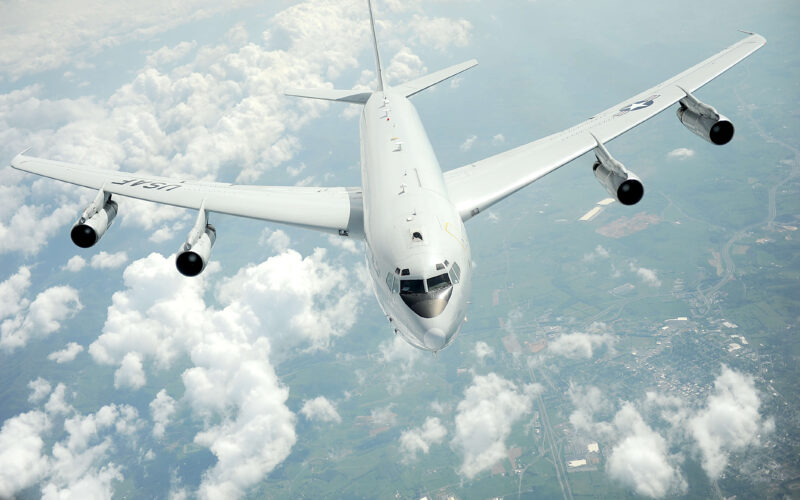For the past two years, the United States Air Force and members of the U.S. Congress have not seen eye to eye when it comes to the replacement of the Northrop Grumman E-8C Joint Surveillance Target Attack Radar System (JSTARS).
In service since 1990, the E-8C JSTARS is an airborne battle management aircraft based on the airframe of the Boeing 707 commercial airliner. Its synthetic aperture radar (SAR) Norden AN/APY-7 allows it to observe the battlefield at a distance of 170 kilometers (105 miles) and detect the movement of enemy vehicles.
The retirement of the fleet of 16 aircraft is scheduled for December 31, 2029. In the early 2000s, Boeing and Northrop-Grumman had launched a joint program, along with Raytheon, to create a replacement for the E-8C JSTARS. But the aircraft, which would have also taken over missions from the Boeing E-4B (the USAF’s “Doomsday plane”) and the RC-135V/W exceeded its budget and in 2007, the program was canceled.
Since then, the solution proposed by the United States Air Force (USAF) for its replacement would be an upgraded version of the Northrop-Grumman RQ-4B Global Hawk strategic drone. However, this idea was met with skepticism by U.S. lawmakers, who would rather keep a human in the equation. Thus, they asked that if a drone solution was chosen, it should be accompanied by a piloted plane capable of accommodating a control and command crew.
Fearing that the USAF might be rushing towards this solution, US Congress amended the conditions of the JSTARS retirement in the 2021 National Defense Authorization Act. Until now, the USAF only had to declare initial operational capability (IOC) for the replacement of the aircraft called the Advanced Battle Management System (ABMS). The IOC is reached when a system meets the minimum requirement for deployment.
Instead, the USAF will now have to certify that the ABMS can deliver “capabilities that are comparable or superior” to the current fleet of 16 aircraft. Those capabilities include “global combatant command (cocom) requirements” and “potential global basing locations”.

